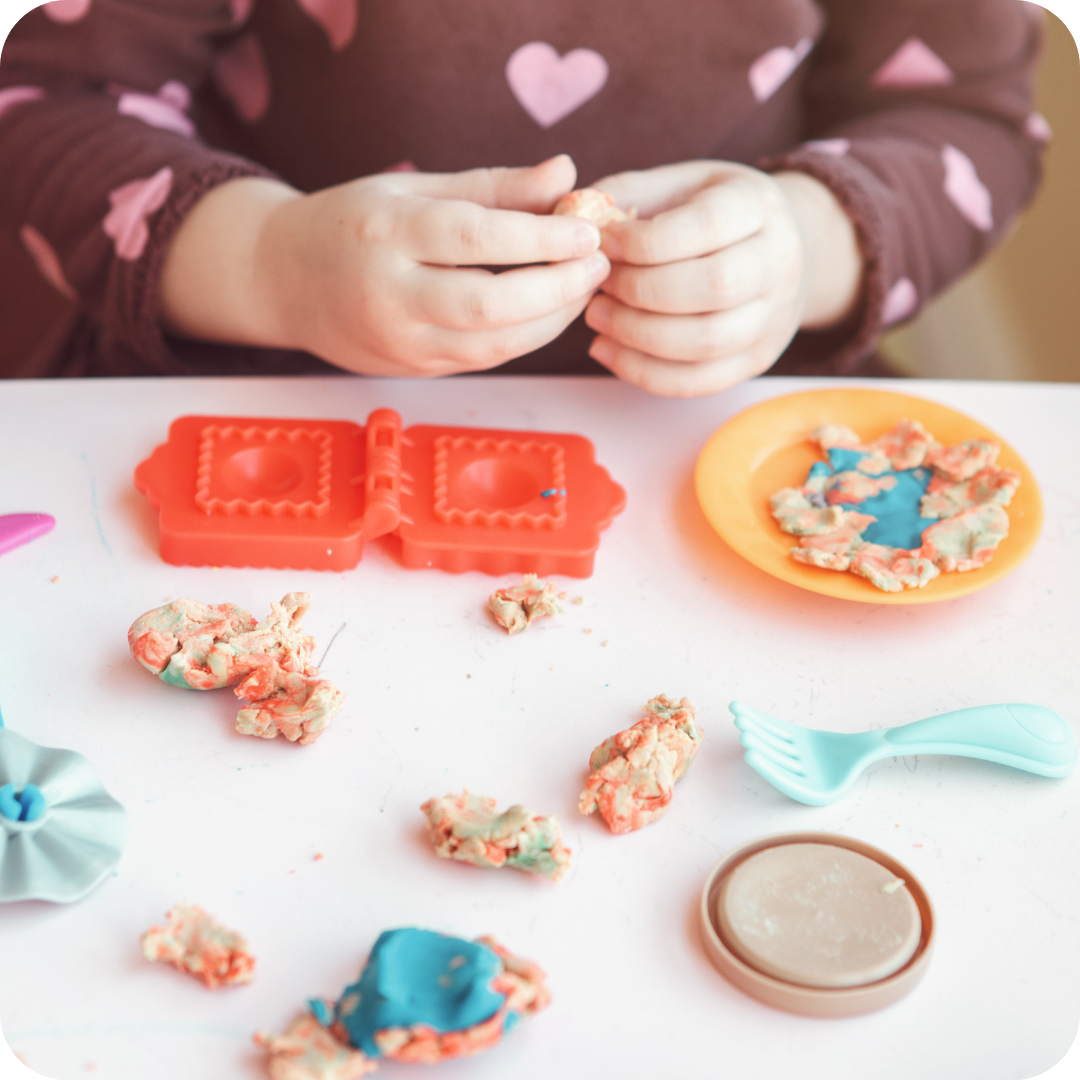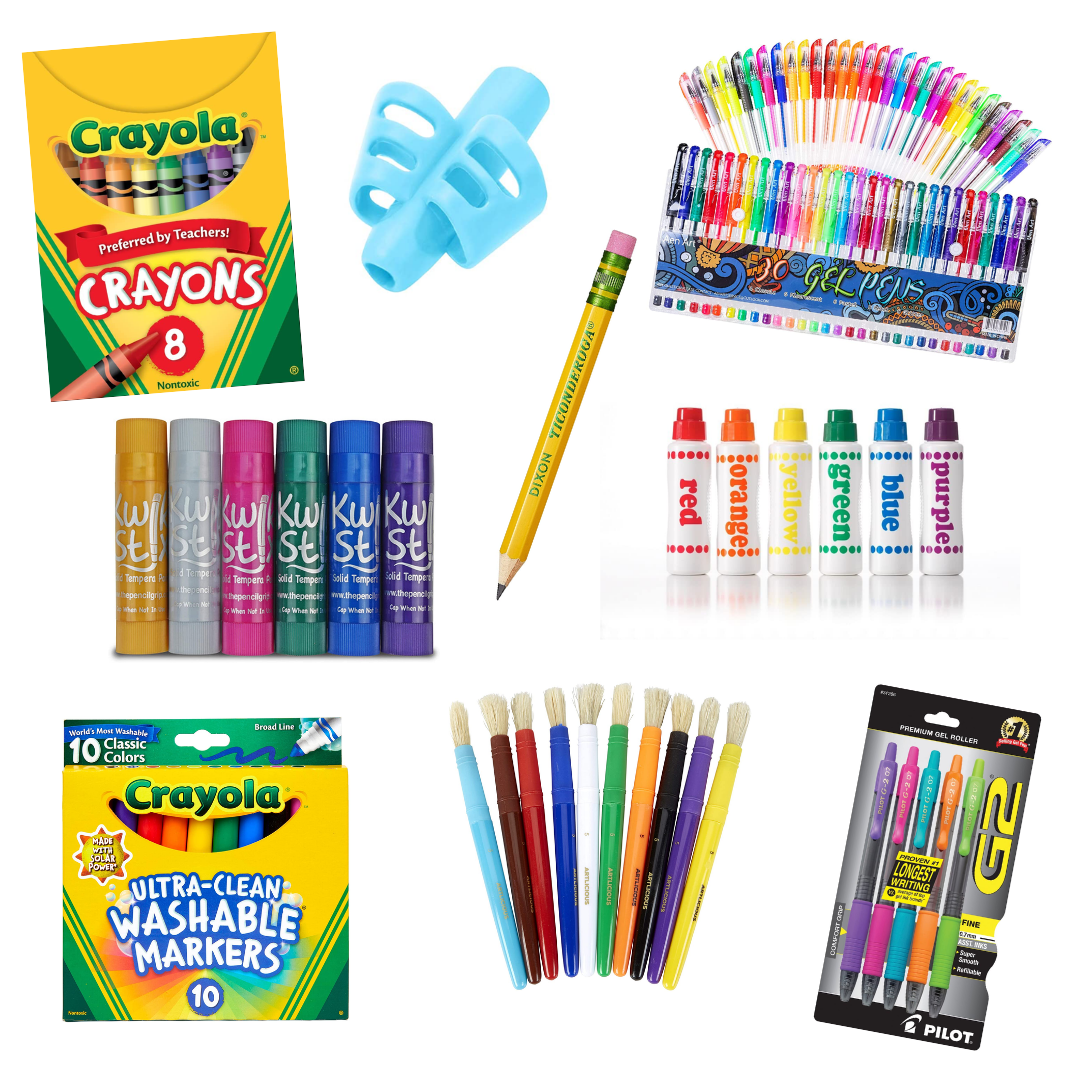
Fine Motor Skills Examples and Activities

Looking for fine motor skills and activities to help your preschooler? Are you also kind of wonder what fine motor skills are?
Fine motor skills are one of those buzz words that we hear when we’re talking about young kids. It’s a benchmark skill for toddlers, preschoolers, and young kids. Your kid’s early years are when fine motor skills are developed, practiced, and focused on. But some of use need a few examples so that we know exactly what we are working on. Let’s take a minute to chat all things fine motor skills so that next time an activity or teacher blogger whips out their teacher lingo you are prepared.

what are fine motor skills.
Fine motor skills describe the ability to control small movements in your hands and wrists.
These skills allow your preschooler to manipulate an object with precision and accuracy.
why do we care?
Improving your kiddo’s fine motor skills will allow them to:
- write
- dress themselves
- pour a glass of water
- cook in the kitchen
- operate a computer and device
- anything that requires steady hands that can make precise movements instead of jerky big movements requires fine motor skills.
Frankly, fine motor skills are not academic but rather life skills. Let’s not forget that our kids are so much more than just literacy and mathematics. And the preschool age is the time when you can really develop and focus on your child as a whole.
Fine Motor Skill Examples
Time for the good stuff, let’s chat about activities we can do to fine tune those fine motor skills. All that background knowledge is great, but now let’s get to some actionable items. You can help your child be successful with their fine motor skill development.

I have linked everything here to make it quick and easy for you. Keep reading to learn more about each fine motor skill exmaple and tool. You can also find everything linked in my Amazon shop, I earn a small commission at no cost to you, and I am so appreciative of it.
pens | crayons | markers | gel pens| paint brushes | paint sticks | golf pencils | pencil grips
carbon copy pads | highlighters | stickers | hole punches | stapler | scissors | silly scissors
washi tape | sensory bin tools| measuring cups | funnel | rolling pin | tongs | pipettes
beads | glue | play dough | dot markers

Art Supplies
All of these art supplies are interesting and fun to your child. While they are creating, they are also learning how to hold writing utensils. AKA fine motor skills.
The skinnier the item is the harder it is for our kids to hold. With younger kids try using dot markers, and paint sticks. Work your way to crayons and gel pens.
If your child is a little bit older, 5- 6 ish, and you are worried that they’re not holding a pencil correctly I have heard of two tips that are successful.
*Disclaimer that I have not used these two tips with my kids as they haven’t been needed and I primarily taught 4th grade, so kids already knew how to hold a pencil.
- Golf pencils – the size of these pencils makes it kind of difficult to grip with your whole fist forcing our kids to use a better grip
- Finger Grip – I had several friends who used these with their kids and rave about them
My last thought about pencil grip, if your child is successful with the way they hold a pencil, leave it. There is no need to change the way they’re holding it just to be “ normal”. I’m 30 years old and I can write very successfully, but my mom thinks that the way I hold a pencil is absolutely bonkers.

Carbon Copy Pads
You can find these at the Dollar Store. They are really designed to be a waitress’s notebook so that she can take orders. However, your kids will think it is the coolest thing to have their words go through the paper.
I have linked them here so you can see what they look like, but they are much cheaper at The Dollar Tree.

Highlighters
Yup, sometimes it is as simple as that. Draw a picture on white paper. Hand your child a highlighter and invite them to trace your picture. I know this one seems simple, but really using cool grown up pens is like magic when you’re 4.

Stickers
Stickers are the quint essential fine motor skill example for preschoolers.
Hot Tip – peel the white background off of the sticker page so that it is easier for your kids to peel the sticker they want off.

Hole Punches, Staplers, and Scissors
These are basically highlighters 2.0.
Again, tools that are usually designed for grown ups are really cool when you’re a kid. Some hole punches are trickier than others even for adults so here are the ones that I recommend for kids. And my kids have access to these regular kid scissors and funky scissors from when I scrapbooked. Both are huge hit.

Washi Tape
I think Michael sells washi tape rolls for like 33 cents A roll. The rolls have fun interesting designs and they are dirt cheap, so you really don’t care what your kids do with them. But peeling off that tape and tearing it or cutting it to the size they want are all fine motor skill examples.
I am linking some here, but Michales and The Dollar Tree are both great places to grab some too.

Sensory Bin Tools
This is my absolute favorite way to practice fine motor skills. I have a fancy set from Learning Resources that admittedly has broken but considering how rough we were with them they were designed very well. We also use measuring cups, funnels, tongs, and pipettes when we play with our sensory bins.

Beads
Stringing beads requires a lot of focus and fine motor skills.
Hot Tip – Thread beads onto pipe cleaners because they are less likely to just fall right off the string.
I have linked two here depending on your kid(s) age.

Gluing
Hear me out on this one. Learning how to use a glue bottle is incredibly helpful when your child goes to school. Squeezing the glue bottle appropriately so that just a dot comes out is a fine motor skill example. Picking up an object to place on the glue also requires fine motor skills.
Will this one be messy? Yeah probably.
Especially in the beginning when they’re still learning. But it’s worth it and this little phrase has helped us quite a bit, “just a dot, not a lot”. I promise it gets easier with time.

Play Dough
I know, play dough is one of those things where parents are either team played dough or team no dough. Just know, I love you either way.
We are team play dough over here and when I watch my kids play with it, I see them rolling, pinching, and squeezing all fine motor skill examples. They are absolutely using that pincher grasp and strengthening their hand muscles.
I get it if you’re team no dough, it is messy. But you can always take it outside. Or do it on top of a sheet that can be rolled up and all the crumbs go right into the trash.
If you are looking for a play dough recipe check out this post.
Or buy some pre-made dough here.

Spray Bottles
There are condiment squeeze bottles and spray bottles. Both engage your child’s hand muscles and are fine motor skill examples. The two options are also both incredibly engaging for kids.

Play
As always, play comes in for the win. Building with Legos or blocks, dressing up dolls, and playing with little figurines are all fine motor skills examples. Any play activity that really focuses on your kids using their hands and their wrists will allow them to strengthen their fine motor skills.
The most important thing to keep in mind when it comes to practicing fine motor skills with your child is to have fun.
If they’re not enjoying writing don’t drill it.
Find ways that they do enjoy like play dough or cutting to strengthen their fine motor skills. And remember that sometimes our children don’t like something because they don’t feel successful in it. Help them build their confidence using activities they do enjoy so that when they go into activities that maybe aren’t their favorite, they feel strong enough to do so.



